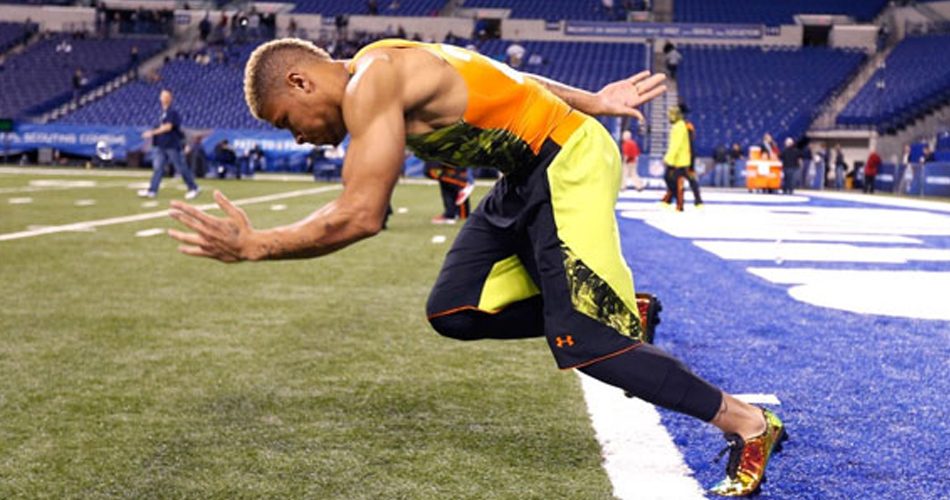Repeated Sprint Ability is Overrated? (Part 3)
Previus parts:
Repeated Sprint Ability is Overrated? (Part 1)
Repeated Sprint Ability is Overrated? (Part 2)
The study by Carling et al. “ is the first to investigate in detail the characteristics of repeated high-intensity movement activity patterns in professional soccer match-play and demands specific to positional role” (p. 332).
I am posting the abstract here, while I am pretty sure the full paper can be downloaded HERE.
The aims of this study were twofold: (1) to characterize repeated high-intensity movement activity profiles of a professional soccer team in official match-play; and (2) to inform and verify the construct validity of tests commonly used to determine repeated-sprint ability in soccer by investigating the relationship between the results from a test of repeated-sprint ability and repeated high-intensity performance in competition. High-intensity running performance (movement at velocities >19.8 km · h(-1) for a minimum of 1 s duration) was measured in 20 players using computerized time-motion analysis. Performance in 80 French League 1 matches was analysed. In addition, 12 of the 20 players performed a repeated-sprint test on a non-motorized treadmill consisting of six consecutive 6 s sprints separated by 20 s passive recovery intervals. In all players, most consecutive high-intensity actions in competition were performed after recovery durations ≥61 s, recovery activity separating these efforts was generally active in nature with the major part of this spent walking, and players performed 1.1 ± 1.1 repeated high-intensity bouts (a minimum of three consecutive high-intensity bouts with a mean recovery time ≤20 s separating efforts) per game. Players reporting lowest performance decrements in the repeated-sprint ability test performed more high-intensity actions interspersed by short recovery times (≤20 s, P < 0.01 and ≤30 s, P < 0.05) compared with those with higher decrements. Across positional roles, central-midfielders performed more high-intensity actions separated by short recovery times (≤20 s) and spent a larger proportion of time running at higher intensities during recovery periods, while fullbacks performed the most repeated high-intensity bouts (statistical differences across positional roles from P < 0.05 to P < 0.001). These findings have implications for repeated high-intensity testing and physical conditioning regimens.
As the abstract says, the aim of this study is two-fold: (1) to characterize repeated high-intensity movement activity profiles of a professional soccer team in official match-play; and (2) to inform and verify the construct validity of tests commonly used to determine repeated-sprint ability in soccer by investigating the relationship between the results from a test of repeated-sprint ability and repeated high-intensity performance in competition.
Without going too much in the study detail (you can download it for free), what the authors tried to do is to get some insights in the frequency of both HIA and RSS during the game. Again, I am not going into details and positional difference. PLEASE NOTE THAT I WILL MOSTLY DO COPY-PASTE OF KEY SENTENCES AND PARAGRAPHS FROM THIS STUDY AND FINISH WITH MY CONCLUSIONS AND OPINIONS.
They used AMISCO system and defined HIA and RSS the way I defined them in the part 1 of this article. The authors then proceeded to find out distribution and quality of recovery between HIA (zones: >61sec, 31-60sec, <30sec, <20sec), maximum number of HIA during the 1 min, 3 min and 5 min window in the game, along with finding RSS patterns.
What they found is that the most commonly observed recovery duration between consecutive high-intensity actions was >61 s (67.0+9.6% of the total number of actions) with the average being 139 seconds. The analysis of activity patterns in between consecutive high-intensity actions showed that players across all positional roles spent the major part of recovery in walking and jogging activities.
The highest number of high-intensity actions recorded in any single 1 min (n = 5) and 5 min (n = 11) period was observed in a fullback, and in a 3 min period (n = 7) jointly in a fullback and a central-midfielder.
Across all players, an average of 1.1+1.1 exercise bouts that met the criteria for repeated high-intensity activity (RSS) were performed per player per match with a statistical difference observed between positional roles.
The maximum number of repeated high-intensity bouts observed in any one match was six (in a wide midfielder) and the peak number of individual high intensity actions reported within any one single bout of repeated high-intensity activity was seven (in a centre-forward). The following picture presents a graphical representation containing quantitative and qualitative information on this intense bout of activity. The overall duration of this bout was 111.0 s, equating to one high-intensity action every 15.9 s. Maximum and minimum recovery times between individual high-intensity actions within this bout were 9.5 s and 40.0 s, respectively. The mean duration and length of these high-intensity actions was 3.1+0.8 s (range 2.1–4.7 s) and 18.4+4.8 m (range 12.1–27.4 m), respectively. The mean speed of actions was 25.0+-1.9 km /h, with a peak speed of 28.2 km/h observed in the final effort of the bout. Of the recovery activity between efforts, 69.1% was spent in walking, 22.3% in jogging, and 10.8% in running activities respectively.

Taken from Carling C, Le Gall F, Dupont G. Analysis of repeated high-intensity running performance in professional soccer. J Sports Sci. 2012;30(4):325-36.
No significant decrements in the mean and maximum velocity of individual high-intensity actions performed during repeated high-intensity bouts were observed irrespective of the number of consecutive efforts (3, 4, 5, or 6) performed in each bout.
When it comes to laboratory repeated-sprint ability, the study showed that the players ranked highest in the four scores of non-motorized treadmill test (mean velocity, highest mean velocity, peak velocity, performance decrement) generally did not display better performance in any of the match activity parameters. In contrast, a higher frequency of high-intensity actions with recovery times
In the discussion part of the article authors made couple of very important statements.
The majority of consecutive high-intensity actions (67.0%) observed in the present players were performed after a recovery period >61 s. Although approximately one-fifth of consecutive high-intensity actions performed were interspersed by short recovery durations (the present results nevertheless suggest that these players had sufficient time to completely recover ‘‘physiologically’’ from the majority of high intensity actions. A 120 s recovery period between short bouts of high-intensity activity has been shown not to lead to a decrement in running performance. even when 15 sprints were performed in succession (Balsom, Seger, Sjodin, & Ekblom, 1992). In addition, the present players performed an average of 1.1 repeated high-intensity bouts per match, with these comprising only three consecutive high-intensity actions. This result is substantially lower than the 4.8 repeated sprint bouts per match observed in international women’s soccer (Gabbett & Mulvey,2008). This discrepancy may be explained by differences in respective methods employed to collect movement data as manual coding techniques are known to lead to overestimations in high intensity running performance. These discrepancies in definitions across studies suggest a need for consensus to ensure standardization in the classification of movement thresholds (according to speed and duration) for time–motion analyses of professional soccer match-play.
Again, this is one of the limitations of this study and all studies based on velocity-based time-motion analysis as stated earlier since they underestimate high-power movement patterns. Hopefully, we will soon see more and more studies based on combination of acceleration/power and velocity.
One of the most important conclusions of this study is that the low frequency of repeated high-intensity bouts observed in the present team suggests that this specific fitness component (RSA) might not play as crucial a role in elite match performance as commonly believed. Alternatively, the prescription of supplementary specific conditioning programmes to improve performance in the present group of elit soccer players could be warranted. Analysis of the maximum and mean running velocity of the individual efforts performed in repeated high-intensity bouts showed in general that players were able to maintain performance even when six high-intensity actions were performed successively with Overall, the present results suggest that the players studied were able to reproduce performance when called upon to perform sporadic but extreme sequences of high-intensity running in match-play.
In the repeated-sprint ability treadmill test, players who reported the lowest percent performance decrement reported a greater frequency of high-intensity actions interspersed with recovery times. On the whole, these results might suggest a lack of empirical support for the construct validity of the present and similar tests of repeated-sprint ability as predictors of high-intensity match performance in professional soccer.
In summary, this study has provided an insight into repeated high-intensity activity profiles and the extreme demands of match-play in professional soccer. Results from this study may also cast doubt on the relative importance of repeated high-intensity activity and therefore the need for conditioning programmes in an attempt to improve the general and/or position-specific ability of professional soccer players to perform repeated high intensity work.











Responses